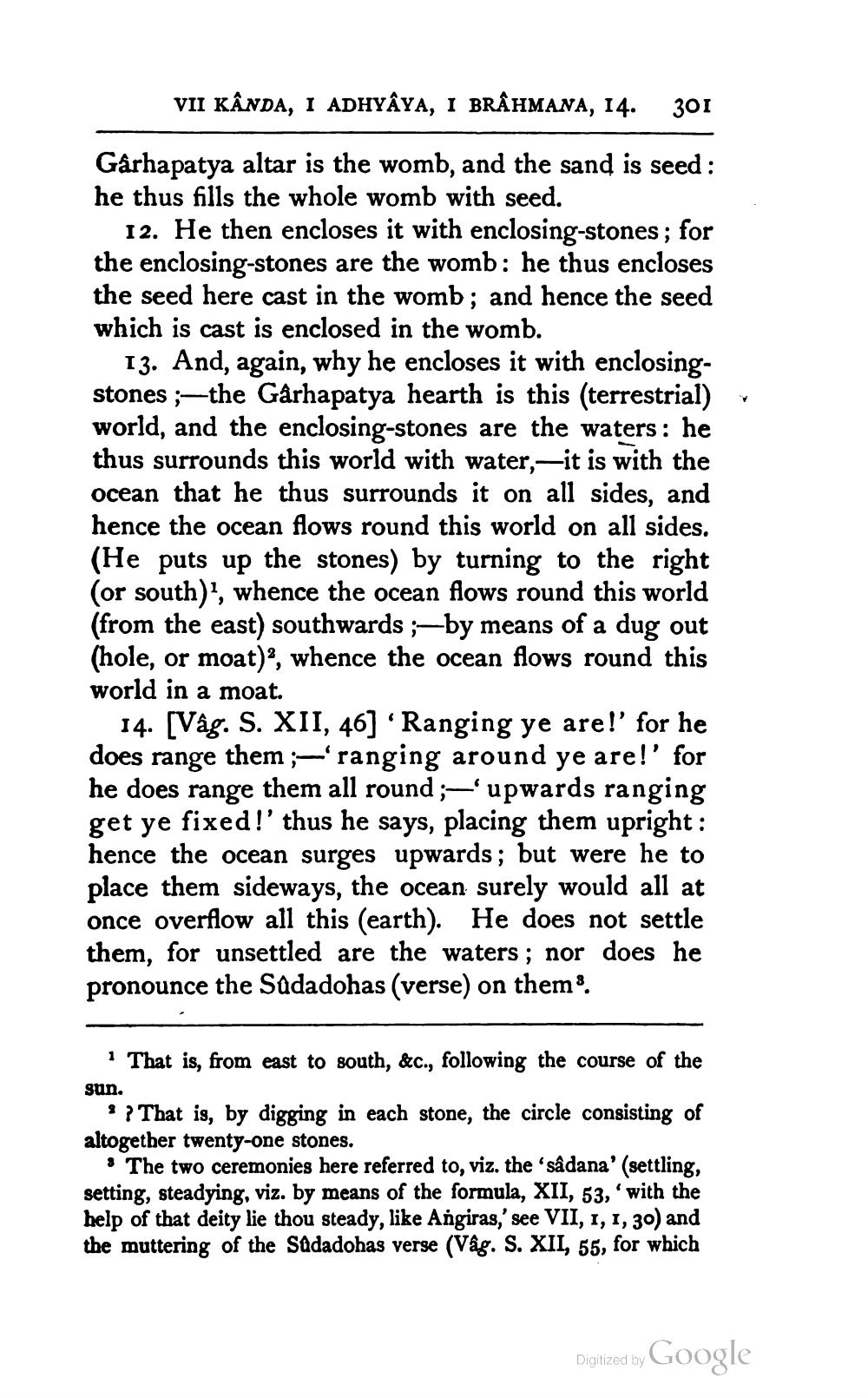________________
VII KANDA, I ADHYÂYA, I BRAHMANA, 14. 301
Gârhapatya altar is the womb, and the sand is seed: he thus fills the whole womb with seed.
12. He then encloses it with enclosing-stones; for the enclosing-stones are the womb: he thus encloses the seed here cast in the womb; and hence the seed which is cast is enclosed in the womb.
13. And, again, why he encloses it with enclosingstones;—the Gârhapatya hearth is this (terrestrial) world, and the enclosing-stones are the waters: he thus surrounds this world with water,-it is with the ocean that he thus surrounds it on all sides, and hence the ocean flows round this world on all sides. (He puts up the stones) by turning to the right (or south)1, whence the ocean flows round this world (from the east) southwards;-by means of a dug out (hole, or moat), whence the ocean flows round this world in a moat.
14. [Vâg. S. XII, 46] 'Ranging ye are!' for he does range them;—'ranging around ye are!' for he does range them all round;—' upwards ranging get ye fixed!' thus he says, placing them upright: hence the ocean surges upwards; but were he to place them sideways, the ocean surely would all at once overflow all this (earth). He does not settle them, for unsettled are the waters; nor does he pronounce the Sûdadohas (verse) on them3.
1 That is, from east to south, &c., following the course of the
sun.
? That is, by digging in each stone, the circle consisting of altogether twenty-one stones.
• The two ceremonies here referred to, viz. the 'sâdana' (settling, setting, steadying, viz. by means of the formula, XII, 53, 'with the help of that deity lie thou steady, like Angiras,' see VII, 1, 1, 30) and the muttering of the Sûdadohas verse (Vâg. S. XII, 55, for which
Digitized by Google




